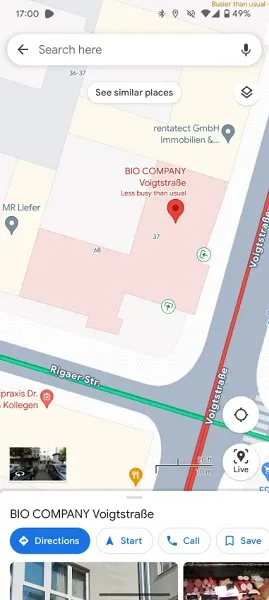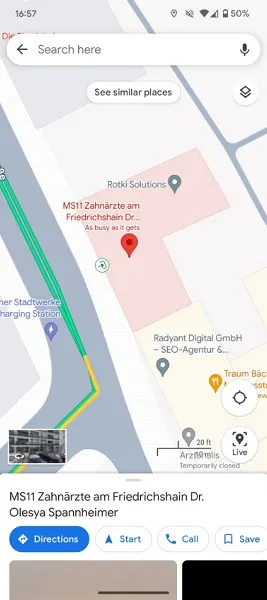Google Maps is continually evolving to enhance its navigation capabilities and improve user experience, especially when it comes to identifying the best places to dine, grab a coffee, or visit landmarks. A new feature currently in the experimental phase aims to simplify finding entrances for large buildings or attractions. This feature, observed in Google Maps version 11.17.0101 on a Google Pixel 7a, introduces an icon to denote entry points to selected locations, visible only upon zooming in close enough and selecting a place on the map. These entry points are marked by circular, white icons with a distinct entrance symbol.


Our testing revealed that this experimental feature is not uniformly available across devices or geographical regions, hinting at its limited testing scope. Additionally, we noted that selected businesses or buildings are highlighted in red, distinguishing them from their surroundings for easier identification.
We tested this feature on various types of establishments, including hotels, medical offices, supermarkets, hardware stores, cafes, and restaurants across cities like New York City, Las Vegas, San Francisco, and Berlin, Germany. The results were mixed, with entrance markers appearing for some locations but not others, suggesting Google is in the process of gathering and refining the necessary data. Accuracy issues were noted, particularly with smaller buildings where entrance markers might not be precisely placed, though this was less of a concern for larger structures.

In certain cases, the entrance icons were represented by a simple green arrow within a white circle, although the criteria for this variation remain unclear. This initiative seems to draw inspiration from a recent update to Google Maps’ public transit navigation, which now shows specific entry and exit points for train and subway stations in select cities, a boon for navigating complex underground networks.
As this entrance indicator feature is still in its nascent stages, a broader rollout may take some time. However, once implemented, it promises to significantly ease the process of finding the most convenient entryways into buildings, enhancing the overall utility of Google Maps.






